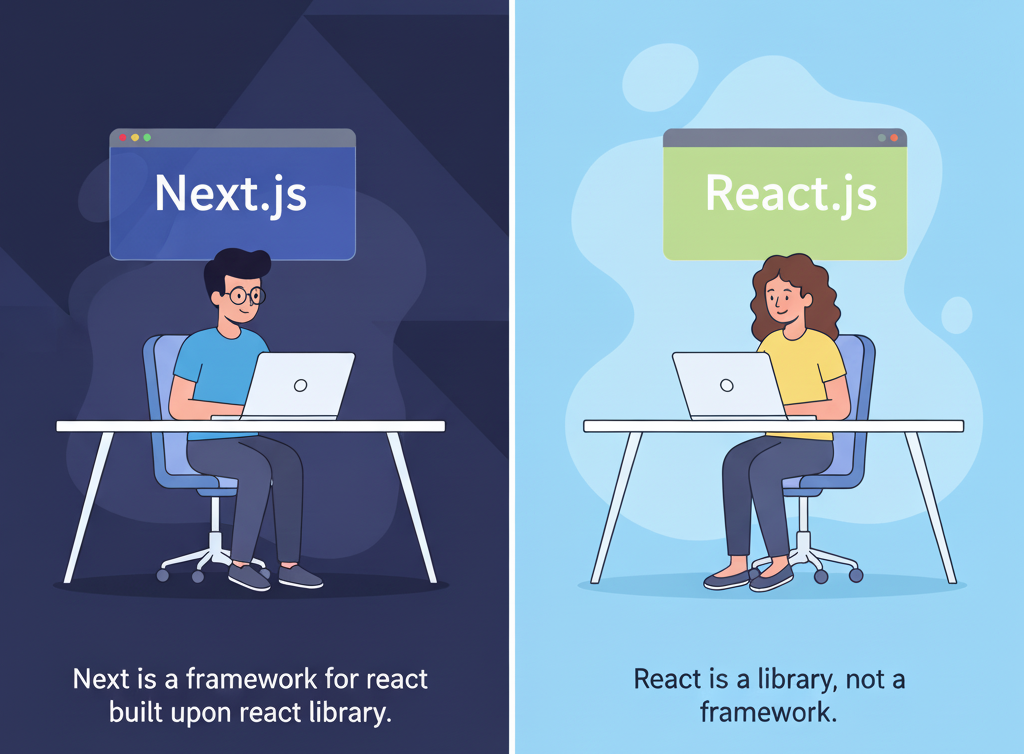React vs Next.js: Which We Prefer for Building Modern Web Apps
A breakdown of React vs Next.js for modern web application development. Griffity Studios—the best IT company in Nepal—shares why Next.js often comes out on top.

React vs Next.js: Which We Prefer for Building Modern Web Apps
In today’s fast-paced tech world, choosing the right framework can define the success of your web project. Two of the most popular tools for frontend development—React and Next.js—both deliver incredible performance and flexibility.
At Griffity Studios, known as the best IT company in Nepal, we use both React and Next.js to craft modern, scalable web applications. But depending on your goals, one might be better suited than the other. Let’s explore why.
React: The Frontend Powerhouse
React is a JavaScript library developed by Meta (Facebook) that makes it easy to build dynamic and interactive user interfaces.
Advantages of React
- Reusable Components: Simplifies UI development and maintenance.
- Strong Ecosystem: Thousands of community-built libraries and tools.
- Ideal for SPAs: Excellent for single-page apps and dashboards.
Limitations of React
- No Built-in Routing: Requires React Router or similar tools.
- No Server-Side Rendering (SSR): Can limit SEO performance.
- Setup Complexity: Needs manual configuration for SEO, caching, and optimization.
Next.js: The Full-Stack Framework
Next.js builds on React’s foundation but adds everything developers need for production-ready performance. It’s a complete framework that supports rendering, routing, and backend APIs right out of the box.
Advantages of Next.js
- SEO-Friendly: Server-Side Rendering (SSR) and Static Site Generation (SSG) boost visibility.
- Faster Load Times: Code splitting and image optimization are automatic.
- Built-in API Routes: Simplifies backend integration.
- Hybrid Rendering: Mix CSR, SSR, and SSG as needed for your project.
Limitations of Next.js
- Slightly steeper learning curve for beginners.
- Requires hosting environments that support SSR (e.g., Vercel, custom servers).
React vs Next.js: Quick Comparison
| Feature | React | Next.js | |-----------------|----------------|--------------| | UI Components | ✅ | ✅ | | Routing Support | ❌ | ✅ Built-in | | SEO Optimization| ⚠️ Requires setup | ✅ SSR + SSG | | API Routes | ❌ | ✅ Built-in | | Performance | Good | Excellent |
Our Preference at Griffity Studios
When building large-scale, modern web apps for startups or enterprises, we typically choose Next.js. It provides faster performance, better SEO, and a smoother developer experience.
However, for lightweight internal tools or dashboards, React alone remains a great choice—especially when speed of development and flexibility are priorities.
Conclusion
Whether you choose React or Next.js, the key lies in matching the tool to your goals. If you want fast, SEO-optimized, and scalable web apps, Next.js is the future.
At Griffity Studios, the best IT company in Nepal, our developers build custom solutions using both React and Next.js—balancing performance, design, and functionality.
Ready to build your next web app with the best IT company in Nepal?
👉 Contact us today and let’s bring your digital vision to life.


